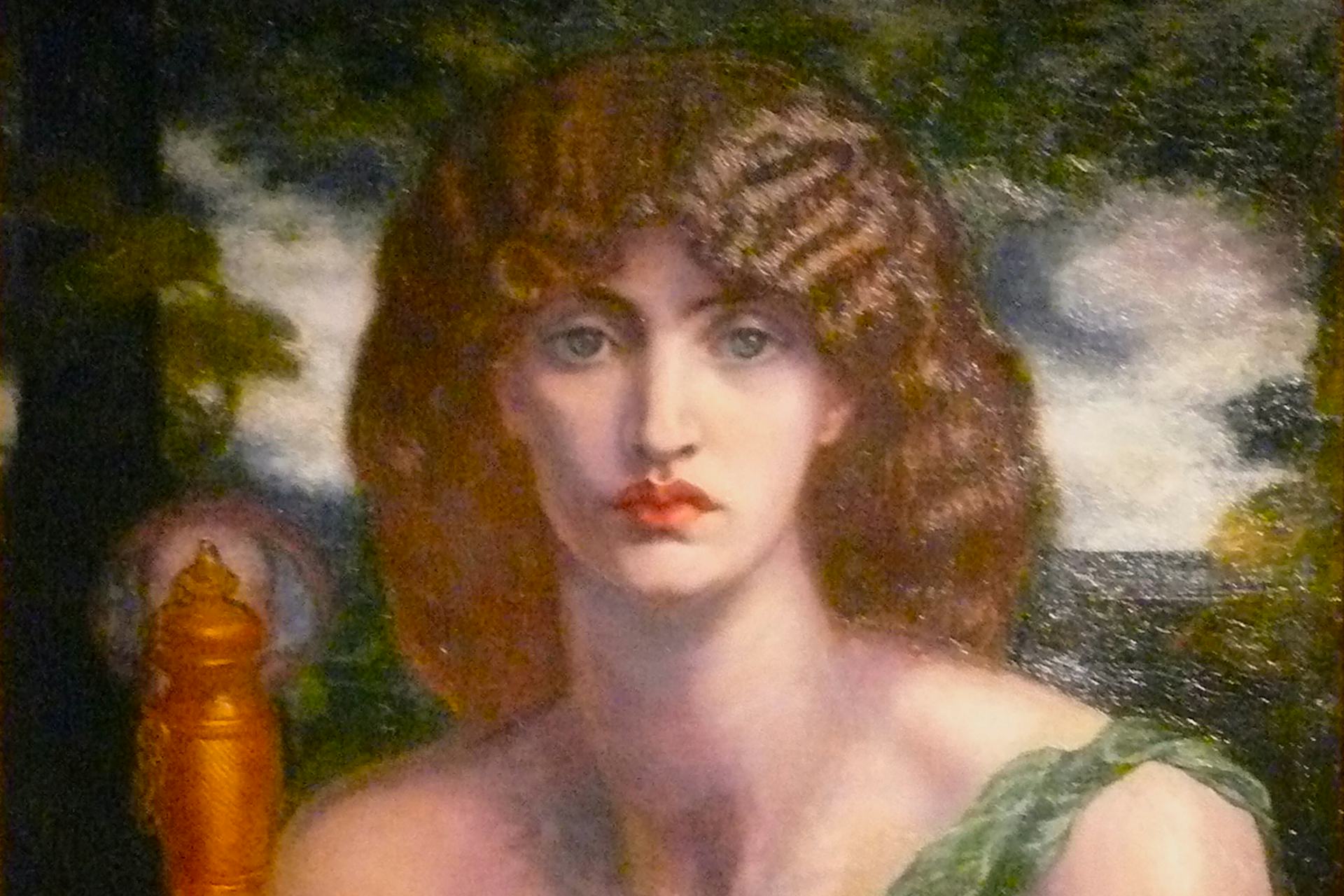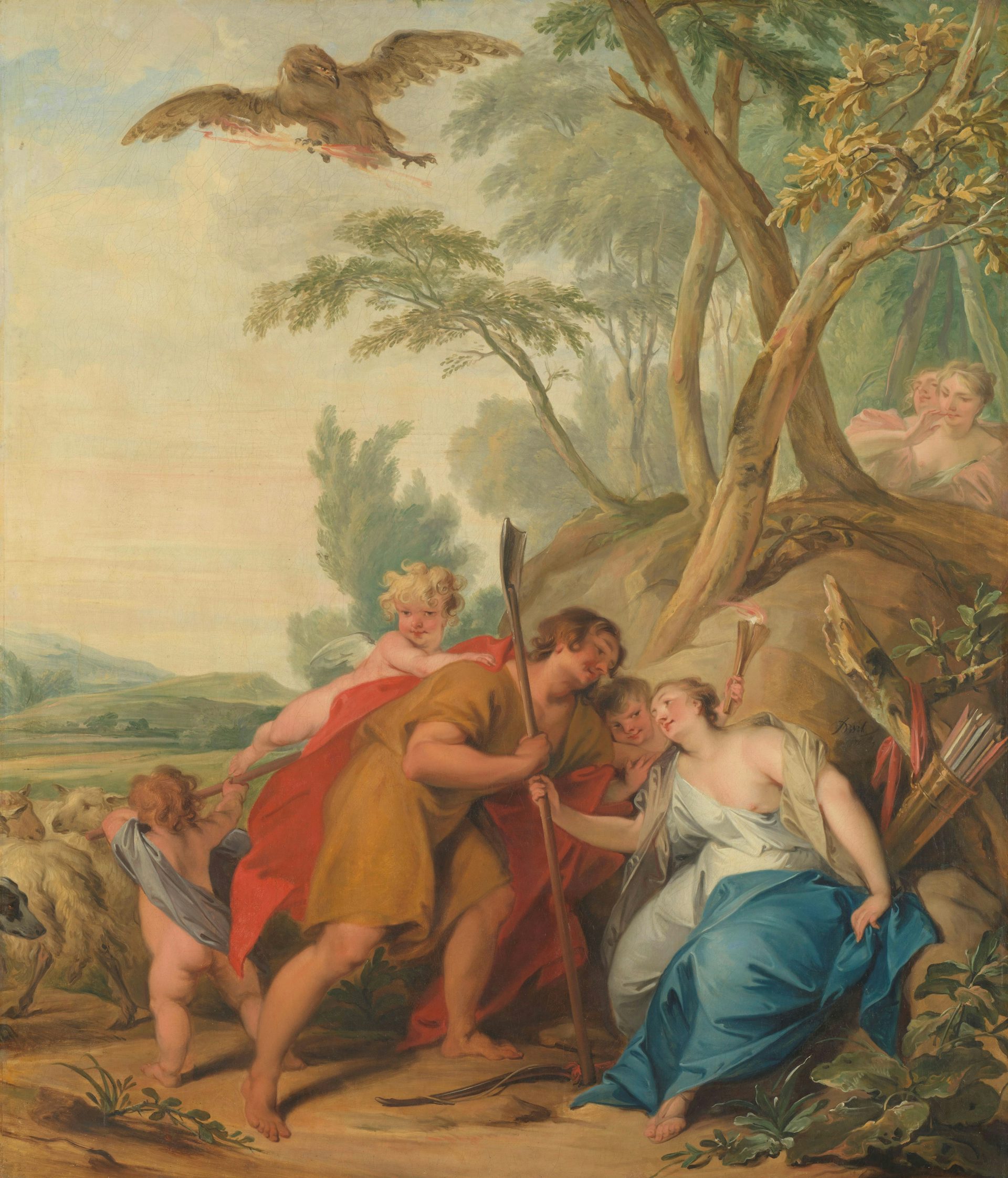Mnemosyne

Mnemosyne by Gabriel Dante Rosetti (1881).
Delaware Art MuseumPublic DomainOverview
Mnemosyne, whose name translates to “memory,” was one of the original Greek Titans born to Gaia and Uranus. An inspirational deity, Mnemosyne controlled all forms of speech and rhetoric. Kings, poets, and philosophers would call upon her whenever they wished to craft powerful and persuasive oratory.
Like her sister Themis, Mnemosyne did not rebel against Zeus and the Olympians during the Titanomachy, the decade-long war between the gods and the Titans. In fact, she eventually became one of Zeus’ many consorts, and together they bore the nine Muses.
In ancient Greece, Mnemosyne was worshipped alongside the Muses. She was also celebrated in the cult of Asclepius—a son of Apollo who was considered the divine source of the medicinal arts. Such recognition was rare for a Titan; most never became objects of worship.
Etymology
The name Mnemosyne (Greek Μνημοσύνη, translit. Mnēmosýnē) is related to the ancient Greek noun μνήμη (mnḗmē), meaning “memory” or “remembrance,” as well as to the verb μιμνήσκω (mimnḗskō), meaning “to remember.” This etymology is likely connected to the Indo-European word *mneh₂- (“to mention”), and possibly to *men- (“to remember”).[1]
Pronunciation
English
Greek
Mnemosyne Μνημοσύνη (translit. translit. Mnēmosýnē) Phonetic
IPA
nee-MOS-uh-nee, -MOZ-] /niˈmɒs əˌni, -ˈmɒz-/
Other Names
The various dialects of ancient Greek presented several variations on Mnemosyne’s name, including Μναμοσύνα (Mnamosýna) and Μναμόνα (Mnamóna). Mneme (Greek Μνήμη, translit. Mnḗmē), the Greek deity who personified memory, was usually considered to be the same figure as Mnemosyne.
Attributes
A goddess of memory and inspiration, Mnemosyne was called upon in speeches, memorials, and any form of art that sought to preserve memories. In the Iliad and the Odyssey, for example, she is invoked whenever a speaker seeks to heighten their rhetorical abilities. Through her children, the Muses, Mnemosyne was associated with all the disciplines used to record and preserve knowledge, including history, poetry, and philosophy.
Family
Mnemosyne was a child of the primordial deities Gaia and Uranus. Her siblings included the other Titans—Oceanus, Coeus, Crius, Cronus, Hyperion, Iapetus, Themis, Thea, Rhea, Phoebe, and Tethys—as well as the destructive and terrifying Cyclopes and Hecatoncheires.[2]
Family Tree
Mythology
In Hesiod’s Theogony, Mnemosyne is first mentioned as a daughter of Gaia and Uranus. However, the text devotes far more attention to her courtship with Zeus and their resulting daughters, the Muses. According to Hesiod, Zeus (possibly in the form of a shepherd) sought out Mnemosyne with her “beautiful hair” and seduced her:
For nine nights did wise Zeus lie with her, entering her holy bed remote from the immortals. And when a year was passed and the seasons came round as the months waned, and many days were accomplished, she bare nine daughters, all of one mind, whose hearts are set upon song and their spirit free from care, a little way from the topmost peak of snowy Olympus.[4]

Jupiter, Disguised as a Shepherd, Seducing Mnemosyne by Jacob De Wit (1727).
RijksmuseumPublic DomainLengthy passages praising Mnemosyne’s daughters were common in antiquity; the writers of the ancient world loved to celebrate the Muses as the source of their craft.
Worship
Unlike most of her Titan brethren, Mnemosyne was worshipped widely throughout the Greek world, often alongside her daughters, the Muses. Important sites of worship included Athens,[5] Mount Cithaeron in Boeotia,[6] Mount Helicon,[7] and a spring near the river Hercynnum.[8] She also seems to have been worshipped together with the healer-god Asclepius[9] and the Boeotian hero Trophonius.[10]
Pop Culture
Mnemosyne has appeared in several modern interpretations of Greek myth. In an episode of the television series Xena: Warrior Princess entitled “Forget Me Not,” the character Gabrielle visits Mnemosyne’s shrine, hoping to forget the tragedies that have befallen her. Mnemosyne also features in an episode of Hercules: The Legendary Journeys; in this case, however, she is presented inaccurately as a daughter of Cronus who detests Zeus.
Due to her association with memory, Mnemosyne’s name often appears in connection with memory aids. For example, Mnemosyne is the name of a software manufacturer that produces flashcard programs for children’s learning. In English, the term “mnemonic” is commonly used to describe teaching strategies or devices that facilitate memorization. The mnemonic “ROYGBIV,” for instance, helps learners memorize the colors of the rainbow.